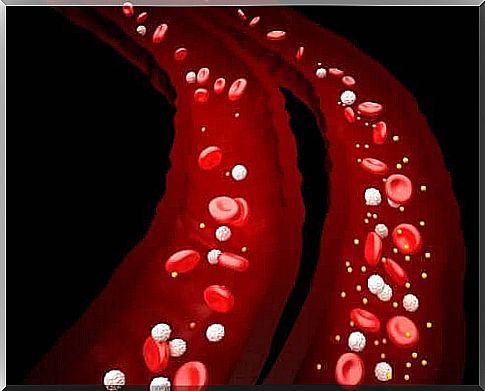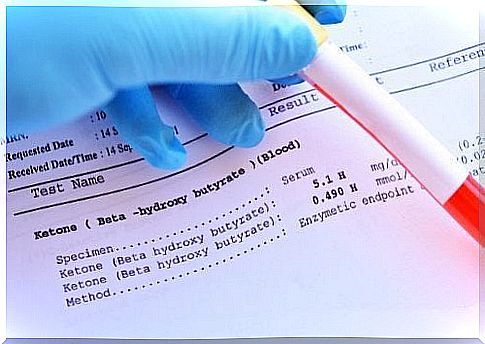Metabolic Acidosis: Causes And Treatment
Treatment of metabolic acidosis targets the root cause of the disorder. Patients with renal failure require hemodialysis, which may also involve individuals poisoned with ethylene glicol, methanol and salicylate.

Metabolic acidosis refers to a disorder of the acid-base balance of the body. Consequence of this: there is a deviation in the pH of the blood. There are different levels of severity, the most serious being the one that can cause the death of the patient.
More specifically, metabolic acidosis causes a decrease in the concentration of bicarbonate and, consequently, an acidification of the pH of the blood. This decrease brings with it a compensatory drop in the partial pressure of carbon dioxide.
In sum, metabolic acidosis is characterized by a decrease in the pH in the blood, a decrease in the level of carbon dioxide and hyperventilation as a compensatory mechanism.
Factors behind metabolic acidosis
Metabolic acidosis is normally caused by more than one mechanism at the same time.
Some of the mechanisms that cause metabolic acidosis are:
- excessive intake or excessive endogenous production of non-volatile acids (for example, in diabetic ketoacidosis, lactic acidosis or acidosis produced by the intake of acid precursors)
- impaired regeneration of bicarbonate by the kidneys (acidosis associated with acute or chronic renal failure) or impaired excretion of protons in the distal tubules ( distal tubular acidosis)
- loss of basic substances (this loss can take place in the kidneys or in the digestive tract)
It is possible to compensate for metabolic acidosis through the respiratory tract, that is to say through hyperventilation. Thanks to this mode of breathing, the partial pressure of carbon dioxide decreases and the blood pH returns to partially or completely normal.
Symptoms of metabolic acidosis

Symptoms of metabolic acidosis are nonspecific. It is for this reason that the diagnosis can be complicated, unless the patient has a clear indication for arterial blood gas sampling.
Symptoms suffered by patients with metabolic acidosis usually include the following:
- chest pain
- palpitations
- headaches
- altered mental status, including severe anxiety related to hypoxia, decreased visual acuity, nausea, vomiting, abdominal pain, altered appetite and weight loss
Also, these patients usually present with different breathing known as Kussmaul’s dyspnea. This type of breathing is characterized by its depth, rapidity, and is associated with classic diabetic ketoacidosis.
In addition, extreme acidemia can lead the patient to neurological or cardiac complications:
- neurological complications
- Lethargy, stupor, coma and convulsions
- heart complications
- Possible arrhythmias and decreased response to epinephrine. Both of these situations lead to low blood pressure
- severe metabolic acidosis
- This type of acidosis can lead to shock or death
The diagnosis

The tests below can help diagnose metabolic acidosis. They can also determine if it is a breathing problem or a metabolic problem that is causing the disorder.
- Arterial gas measurement
- Basic Metabolic Panel : This is a set of blood tests that measure sodium levels, potassium levels, kidney function, and other chemicals and functions.
- Urine pH analysis
- The presence of ketones in urine and blood
- The lactic acid test
- Other examinations
Treatment of metabolic acidosis
Treatment for metabolic acidosis targets the root cause of the disorder. Patients with renal failure require hemodialysis, which may also involve individuals poisoned with ethylene glicol, methanol and salicylate.
In severe acidemia, the patient is usually given sodium bicarbonate, but administration should be done with caution as in some cases it can be harmful.
- When metabolic acidosis is related to the release of bicarbonate ions or the accumulation of inorganic acids, treatment with bicarbonate is generally safe and appropriate.
- On the other hand, when acidosis is linked to the accumulation of organic acids, this type of therapy is controversial, since it does not significantly decrease the death rate and is, moreover, associated with d ‘other risks
Despite these controversies and many others, most specialists continue to recommend intravenous administration of bicarbonate in severe metabolic acidosis, that is, one with a pH value below 7 , 1.









